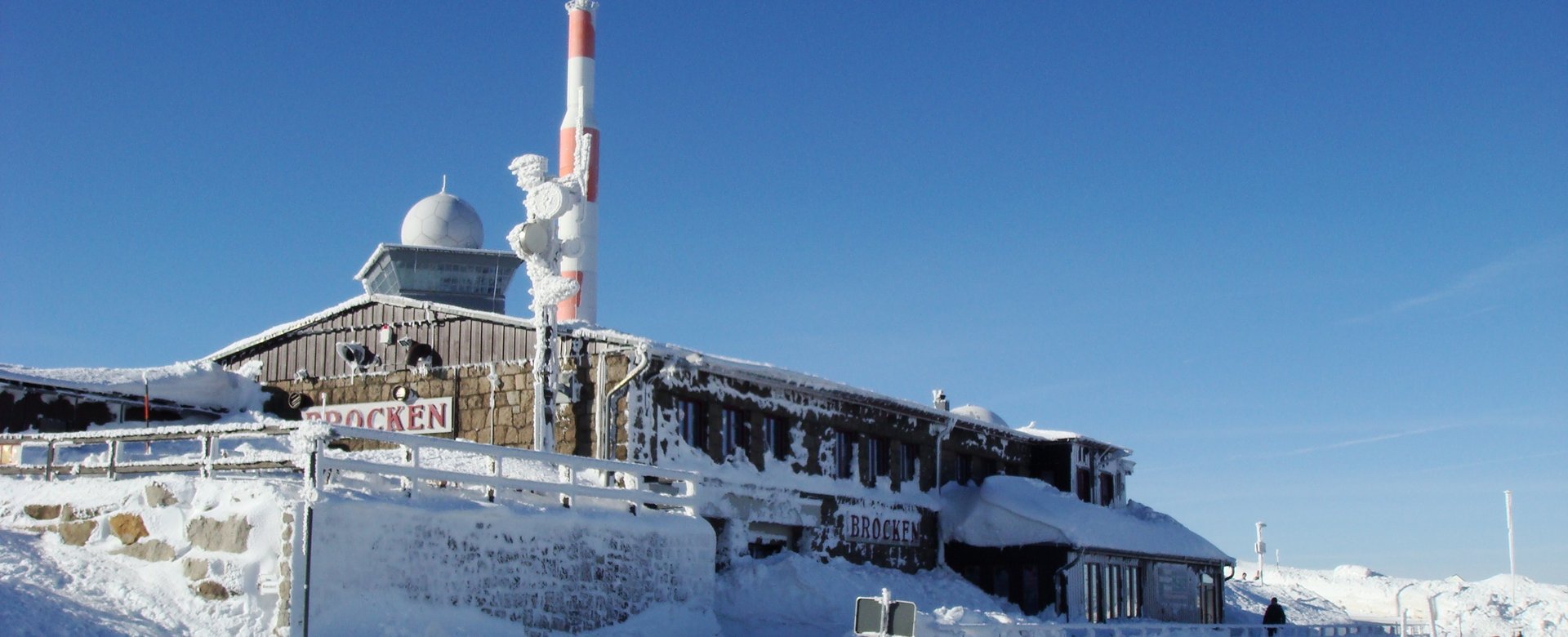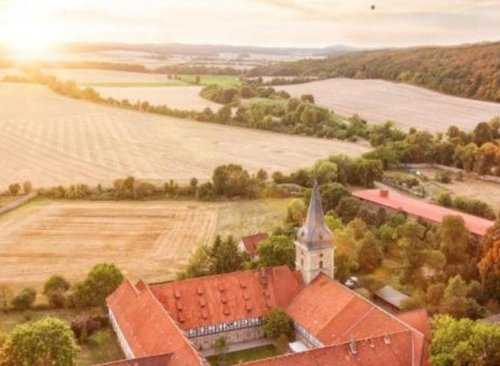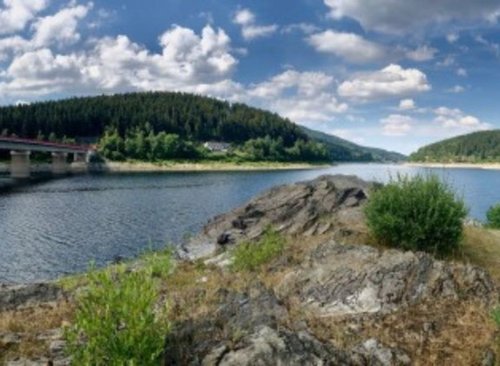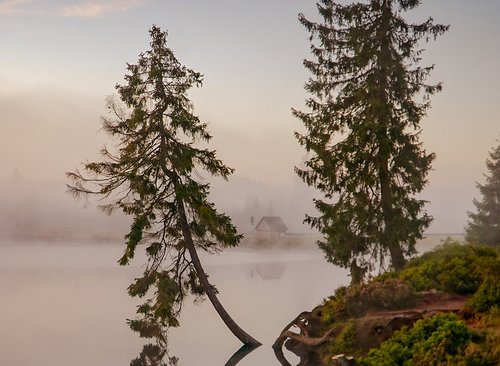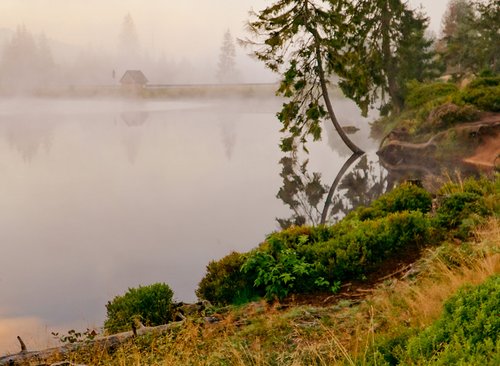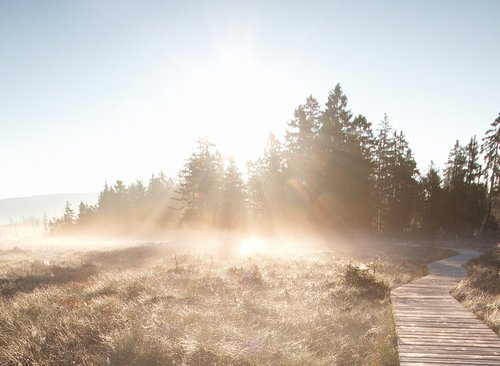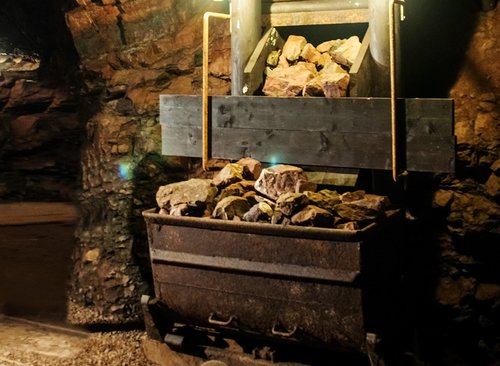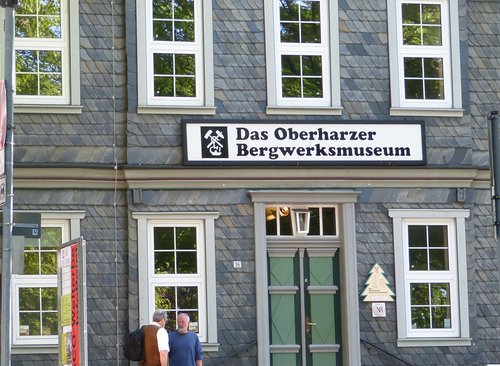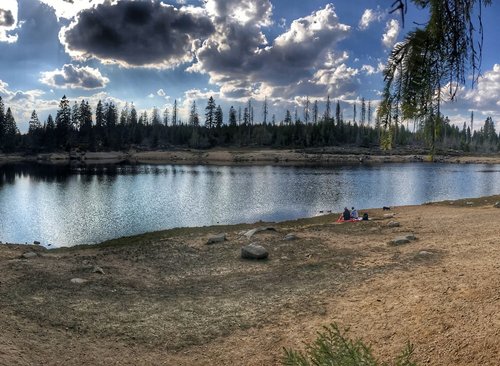The Brocken
In the centre of the Harz National Park you will find the highest mountain in northern Germany - the Brocken. Goethe was already enthusiastic about the Brocken and the landscape of the Harz and immortalised the Brocken in his "Faust". Not only since then has the Brocken in the Harz Mountains been considered a magical place, which devils and witches have chosen as their favourite place and celebrate especially on Walpurgis (30 April) with eerily beautiful festivals throughout the Upper Harz.
On numerous hiking trails you can explore the landscape around the Brocken and, of course, climb to the summit of the Brocken. At an altitude of 1141 metres, you can see as far as the Großer Inselsberg in Thuringia, the Köterberg in Weserland and the Petersberg north of Halle an der Saale in good visibility from the summit of the Brocken.
The climate on the Brocken
The Brocken is largely made of granite. If you want to explore the Brocken landscape, you should be prepared for sudden changes in the weather. This is because extreme weather conditions prevail on the Brocken, as the summit of the Brocken lies above the natural tree line.
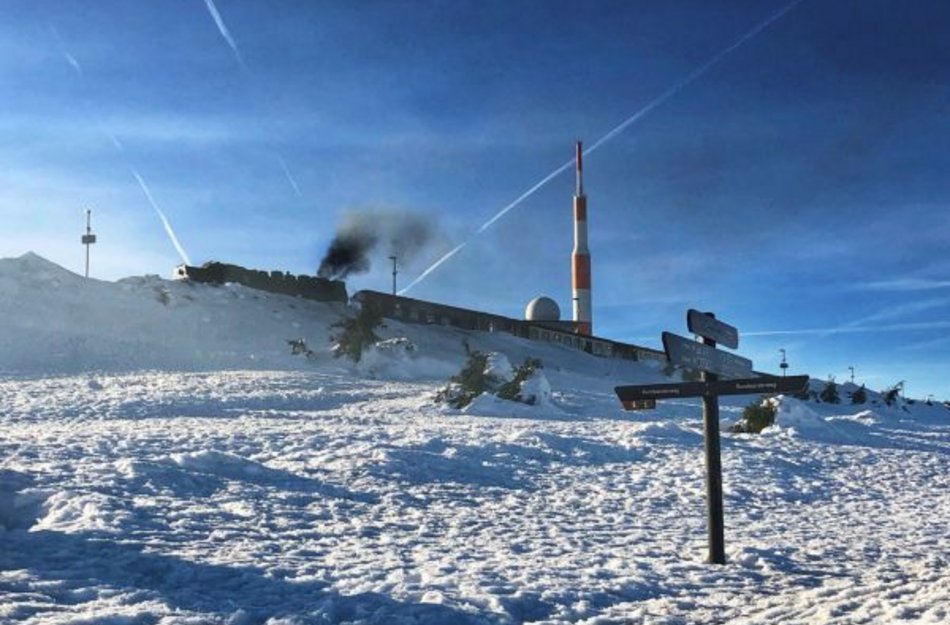
Explanatory film Brocken
Even in summer, the climate on the Brocken corresponds to an alpine location at an altitude of 1,600-2,200 metres. You will find a comparable climate in Iceland. It is precisely this harsh climate that is the reason for the Brocken's unique flora. The Brocken summit belongs to the sub-alpine vegetation zone, so you will find flora and fauna here that is comparable to that of northern Scandinavia. Typical species that can only be found on the Brocken, almost exclusively in Germany, include the small alpine pasque flower, hawkweed, sedge, lady's mantle and bloodroot. Some rare animal species also live in the Brocken landscape, such as the meadow pipit, the ring ouzel and the common lizard.
Brocken railway
Do you want to explore the breathtaking landscape of the Brocken, but are not good at walking? Then why not take the traditional Brocken railway up to the summit. The Brocken railway runs from Wernigerode via Drei Annen Hohne to the Brocken.
FIRST ASCENT OF THE BROCKEN
It is certain that the first people set foot on the Brockenkuppe as early as the Stone Age - however much firn ice it may have been covered with during the ice ages. It is still rumoured that the Nordhausen doctor Johannes Thal was the first known climber to reach the summit in the course of his botanical research before 1572. However, the scholar Tilemann Stella had already been to the summit before him for cartographic purposes and Dr Friedrich Dennert established in his comprehensive historical work on the Brocken (Geschichte des Brockens und der Brockenreisen, Braunschweig 1954) that the first documented ascent of the Brocken took place around 1460 - recorded in the so-called Erfurt-Leiden manuscript.
GOETHE AND THE BROCKEN
Today'sGoetheweg to the BrockenJohann Wolfgang Goethe (who was not yet ennobled at the time) never saw it, nor the Abbegraben, which had not yet been built in 1777. The Goetheweg was not Goethe's path - in any case, its precise route is unknown. The Goetheweg was paved and developed as a path by the Harzklub in 1891 - only then did this name become established. It is still often said and written that Goethe was the first to climb the Brocken in winter in 1777 - there were already daredevils before him at this time of year and he was not alone on the mountain, but was guided by the Torfhaus forester Johann Christoph Degen.
HEINRICH HEINE AND THE BROCKEN
Heinrich Heine allegedly wrote in the summit book after climbing the Brocken in 1824: "Many stones, tired legs, no view, Heinrich Heine." However, this quote was only attributed to him - anyone who knows anything about literature will immediately realise that this is not the language of the poet Heine. It can even be found in the renowned Merian and former prime ministers were also exposed to this false quote by their speechwriters - for example Christian Wulff at the opening ceremony of theTorfHaus National Park Visitor Centre. When Wulff saw the distorted face of the national park press spokesman, who had not seen the speech beforehand, he became unsure - but read out was read out ... Incidentally, Heinrich Heine descended from the Brocken to Ilsenburg, not from there to the mountain, as most hikers on this route do today - this is also spelt incorrectly from time to time. And like Goethe, he did not take the exact route that is named after him today.
HEIGHT OF THE BROCKEN
The most widespread incorrect figure for the Brocken is probably the alleged height of 1142 metres. However, the correct height of 1141 metres above sea level has since become established, although a further specification in centimetres, as is occasionally found, makes little sense for a mountain whose summit has been reshaped so often by man.
But where does the well-known height of 1142 metres come from? In 1850 and 1864, two granite pillars were erected on the Brocken summit for trigonometric observations, the upper edges of which had a height of 1142.27 and 1142.1 metres respectively. These pillars no longer exist today, but their heights have found their way into numerous reference works.
After the withdrawal of the Russian army in the mid-1990s, it was discovered that the figure of 1142 metres was incorrect. Various figures were quoted in the press - the Brocken summit was said to be 1141 or even just 1140 metres high. During the renaturalisation of the Brocken plateau, additional boulders were therefore piled up, which today represent another tourist attraction and cannot be overlooked. But here, too, the height given is not correct...
NAME OF THE CHUNK
The name of the mountain is not easy to explain - the subject still raises difficult questions today. Nevertheless, it is unforgivable that the most absurd theories are still being put forward, even though most of them have already been refuted by Dr Friedrich Dennert. Dennert ultimately came to the conclusion that the name can most probably be derived from the term "Bruch", i.e. "moor" or "boggy terrain", which also applies to a good part of the Brocken. Although this interpretation is also critically scrutinised, this well-founded assumption can still be regarded as the current state of research until a more convincing derivation is presented.
GEOLOGY OF THE BROCKEN
You still hear from time to time that the Brocken was a volcano, although this geological nonsense is no longer very widespread. Nevertheless, the author of these lines still heard it on 18 September 2013 in the explanatory announcements on the traditional Brockenbahn train - told cheerfully and full of self-confidence - and almost all the passengers believed it. The truth is that the Brocken is made up of granitic rocks from the Brocken pluton. The tough but free-flowing granite magma was formed when the mountain root sank deep due to plate tectonics, partially melted, then rose again and cooled near the surface around 293 million years ago, but without erupting volcanically. This process is called plutonism - hence the Brocken granite is a plutonic rock.
TEMPERATURES ON THE BROCKEN
The average temperatures given for the Brocken are still far too low and are written off uncritically time and time again. However, due to climate change, the average annual air temperature in the area of the Brocken summit is already over 4 °C according to data from the German Weather Service - and the trend is rising.
SOLDIERS' GRAVE ON THE BROCKEN
To this day, some people assume that the grave of the Wehrmacht soldier Johann Appel is located on Brockenstraße between Knochenbrecher and Kuppe. He did indeed die there in the final days of the Second World War, but his remains were moved to the Blankenburg forest cemetery in 1975.

